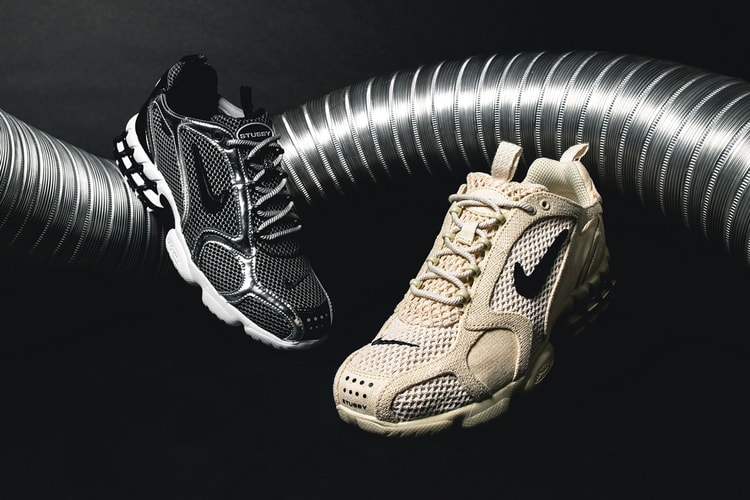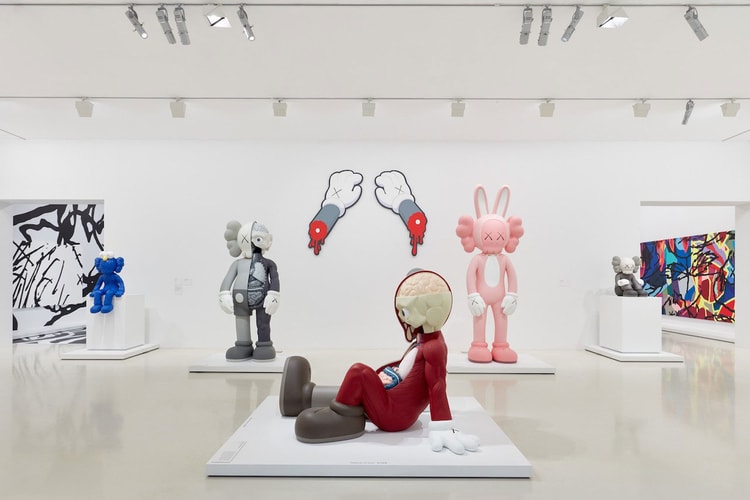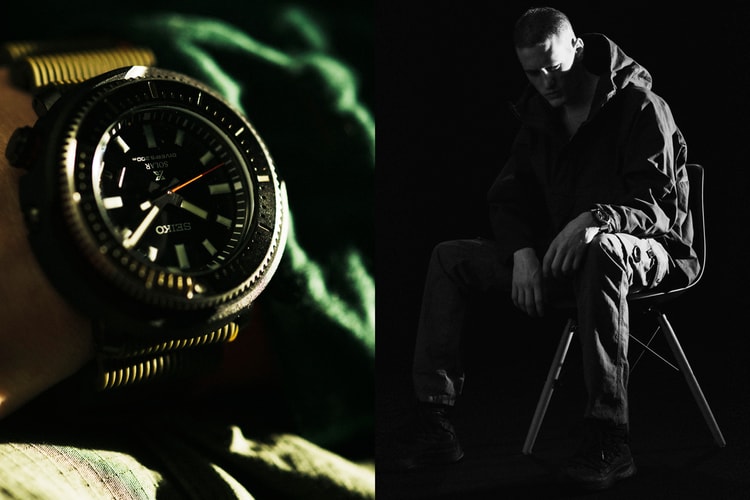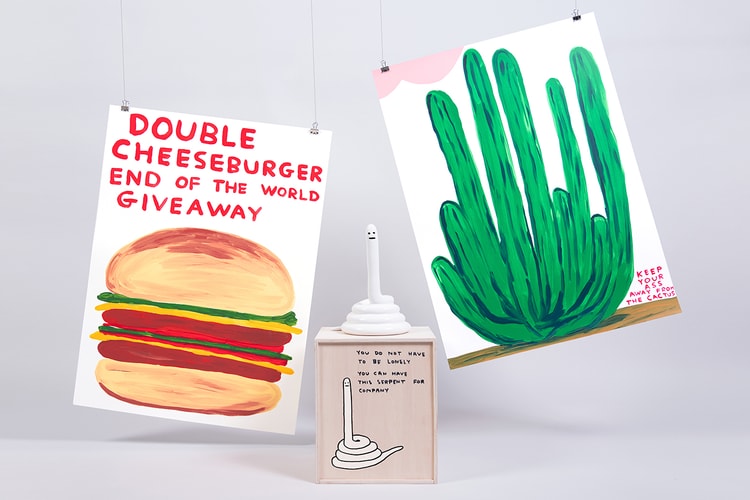

Western society automatically stigmatizes that which is not typically beautiful. This is less a shocking realization and more a common truth, one that’s continually undermined by activists introducing alternative beauty into mainstream culture. The leaderless movements aren’t reclaiming “ugliness,” per se, but rather looking beyond the vanities that have been baked skin-deep into our capitalist civilization.
Enter Wretched Flowers, an anonymous artist collective tackling some of the floral industry’s deeply rooted issues. Hot topics include unsustainable practices, a singular focus on conventional (read: utterly bland) appeal, and a limited selection of uniform plants, all of which stand in stark contrast to Wretched Flowers’ earnest DIY application. A dynamic array of oft-unloved plants foraged by hand in and around New York, like Morning Glory, Devil’s Snare, kelp, and various mushrooms, informs the group’s arrangements.

Ostensibly, the mission is to upset the floral industry’s narrative of beauty through conformity, with an added edge of sustainability. By building arrangements primarily consisting of invasive species from the local ecosystem, Wretched is tidying up local plant life while offering handcrafted arrangements and sidestepping engaging in the oft-harmful activities necessary to offer ordinary flowers on demand. “For us,” they explain, “beauty is a leaf that’s been half-eaten by a caterpillar, not a pristine rose that’s been fumigated and covered in pesticides.”
Wretched seeks to find ephemeral, uncommon beauty. One angle of the project is to subvert their prior sculptural practice with organic resources, transforming invasive species of plants into living botanical artworks. Simultaneously, Wretched Flowers aims to invite its growing fan base to reconsider the flower market, inviting them to review the industry’s sustainability and ethics.
“We’re really about celebrating plants for what they are. For us, beauty is a leaf that’s been half-eaten by a caterpillar, not a pristine rose that’s been fumigated and covered in pesticides.”
A willingness to get down and dirty in New York’s oft-unappreciated ecosystem speaks to Wretched’s readily apparent love of plant life, but the group’s willingness to discuss the effects of capitalism and colonialism on the floral industry at large shines a light on the project’s humanitarian considerations. The collective isn’t out to change the world necessarily, but changing even a few minds is a noble goal in and of itself. Even without lofty aspirations, Wretched Flowers’ irresistibility can be boiled down to a single rhetorical aside: Who doesn’t like flowers?

To start, how did you go from guerrilla art installations as hotel art to this floral project?
There were a couple of different things that we were doing before this. One was a curatorial project called Hotel Art Pavilion, where we were curating these gallery exhibitions in our space in Brooklyn, and guerrilla-style installations elsewhere. Simultaneously, we had our own collaborative artistic practice. That’s still going on, but it’s morphed into Wretched Flowers.
We had already been working with these ideas of what is natural, what is artificial, and humanity’s relationship to the environment. But one of the things that we kept returning to was botanical sculptural arrangements, not necessarily using actual plant material, but casting plants in other materials.
Can you explain the origins of the name Wretched Flowers? And what is the mission statement, so to speak, of the project?
“Wretched” gets to this idea of being an alternative to the conventional flower industry, which is so gendered and centered around perfection. We sustainably source and forage everything we use here in New York. We’re really about celebrating plants for what they are. For us, beauty is a leaf that’s been half-eaten by a caterpillar, not a pristine rose that’s been fumigated and covered in pesticides. So we’ve been using “wretched” as a positive term. People might think of a decrepit, decaying, dying plant as wretched, but that’s the ecosystem that we’re really celebrating.
Can you explain how your artistic background informs Wretched?
We’ve been spending the past almost-decade learning some things. First, the art world is a terrible place to be an artist. Any emerging artist will tell you that there’s a lot of unpaid labor that goes into it. You’re at the bottom of the totem pole unless you start off very privileged. Second, we learned that you’re beholden to very wealthy collectors, i.e. the one percent. You’re limiting who your audience can be and how many people can relate to your work in a meaningful way. Third, we learned it’s hard to find a broad audience while also making something that is political or meaningful without coming off as gimmicky.
Through floristry, we found a new financial model, where we’re making essentially ephemeral sculptures but at the prices of a boutique florist arrangement. Your average boutique florist in Manhattan probably starts at $120 for an arrangement; ours start at $95. We’re finding that we’re able to be not only more financially sustainable but make our work more accessible to a larger amount of people. We’re also able to exemplify a sustainable practice and share information about conservation, environmentalism, climate change, and New York’s local flora on our Instagram @wretched_flowers_.

When does a plant speak to you? When do you think, “This is one that we need to pick up”?
We started it at the end of spring of 2019, so every season has been new for us. We’re utilizing whatever the season brings, letting that set the boundaries and trying to break some of those rules. One of the plants we have now is devil’s snare, which is extremely toxic if you smoke it or eat it, plus the seeds are hallucinogenic. But they grow wild all over New York.
Do smells ever play a role in your arrangements?
A lot of the plants we use aren’t necessarily fragrant in the way that you imagine nice smelling flowers. For instance, devil’s snare smells wild. It’s offensively weird. We just did this collaboration with Anicka Yi for the launch of her new fragrance ‘Biography’ that was really specific. We wanted the arrangement to smell earthy and dirt-like, the exact opposite of smelling a big rose. We created a concept around what’s hidden beneath the surface, using seaweed from under the ocean and roots, clay, and dirt buried underneath the ground.
“I’m sure a real florist looks at our project like, ‘These fucking people have no idea what they’re doing.’”
How do you choose the vases?
We like thinking about the vase as part of the sculpture and how it can be a lot weirder than most people expect. For a while, we were going to vintage stores, thrifting, and finding things. Now we’re firing some ceramics ourselves, as well as 3D-printing bioplastic. We’re also thinking about objects that can be a little higher value.
One of my favorite photos on your Instagram showed a bouquet jammed into a plastic cup that was holding a drink.
It’s funny that you reference that. It ties into another reason why we started Wretched Flowers. When we were doing our sculptural thing, it was just taking so damn long to make anything, waiting for things to cure. Then we figured out that being a florist is this quick, ephemeral gesture. You can make a sculpture within 20 minutes and be more intuitive about it. Sometimes those have the best results. I’m sure a real florist looks at our project like, “These fucking people have no idea what they’re doing.”

What solutions do you propose to people who want a more typical arrangement?
There are little independent farms where you can clip their flowers. You could forage for yourself. You could find a local sustainable florist that grows their own flowers. We’re all so used to the ease of ordering through Amazon. People are at their computer thinking, “Oh God, it’s my mom’s birthday. I need to order her flowers real quick.”
This project isn’t about making anyone feel bad for what they’re doing. It’s more that we already know about the sustainability issues with food, and the issues are the same with flowers. But no one’s really talking about it. It’s about spreading awareness. We don’t want to be super prescriptive. You know, bodega flowers are five bucks. If you want to get someone flowers and you only have five bucks, that’s a fine option. We don’t want to put the burden on the consumer. It’s actually the flower industry’s fault.
“This project isn’t about making anyone feel bad for what they’re doing. It’s more that we already know about the sustainability issues with food, and the issues are the same with flowers.’”
Is it difficult to balance the vision that you have with how it may be perceived? I could imagine if you’re creating an installation or a centerpiece for dinner, you wouldn’t want the mushroom that’s bleeding. Or would you?
It depends on the client. Some people understand. We do use a lot of plants that are toxic, so sometimes we have to ask, “Do you have kids? Do you have dogs?” We always give a little printout with each bouquet that gives interesting facts about the flowers and also might say, “If it is toxic, it can kill dogs. Keep it away.” To be fair, a lot of flowers that you get from even regular florists are totally toxic if eaten. But we’re super careful about that stuff.
Is it fair to say that you have a desire to change the mind-set of how people approach flowers?
Bringing the outdoors into your home reminds you that the environment exists, and it’s in crisis. We need to keep this in our minds daily because it’s only a matter of years until it’s too late.
A short reading list, courtesy of Wretched Flowers:
1. For general information, along with cultivation and trade history, pick up a copy of The Reason for Flowers by Stephen Buchmann.
2. To read more about the cut flower industry, try Flower Confidential by Amy Stewart.
3. If mushrooms, fungi, algae and seaweed are more your speed, try Radical Mycology by Peter McCoy for mushrooms, and Practical Phycology by William Padilla-Brown for algae.
4. Field guides work better as apps than books, thanks to technology. Good ones to try are PlantNet and PlantSnap.

THIS STORY WAS ORIGINALLY PUBLISHED IN HYPEBEAST MAGAZINE ISSUE 28: THE IGNITION ISSUE AS “EARTHLY DELIGHTS.” FIND OUT MORE HERE.























Photographer
Eddie Lee